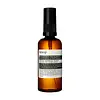What's inside
What's inside
 Key Ingredients
Key Ingredients

No key ingredients
 Benefits
Benefits

 Concerns
Concerns

 Ingredients Side-by-side
Ingredients Side-by-side

Water
Skin ConditioningAloe Barbadensis Leaf Juice
Skin ConditioningGlycerin
HumectantCocamidopropyl Hydroxysultaine
CleansingSodium Cocoyl Isethionate
CleansingHydroxypropyl Starch Phosphate
Disodium Coco-Glucoside Citrate
EmulsifyingSodium Chloride
MaskingCocos Nucifera Oil
MaskingLactic Acid
BufferingPotassium Sorbate
PreservativeDisodium Phosphate
BufferingSodium Isethionate
CleansingHydroxyethylcellulose
Emulsion StabilisingSodium Gluconate
Skin ConditioningSodium Levulinate
Skin ConditioningCoconut Acid
CleansingSodium Phosphate
BufferingWater, Aloe Barbadensis Leaf Juice, Glycerin, Cocamidopropyl Hydroxysultaine, Sodium Cocoyl Isethionate, Hydroxypropyl Starch Phosphate, Disodium Coco-Glucoside Citrate, Sodium Chloride, Cocos Nucifera Oil, Lactic Acid, Potassium Sorbate, Disodium Phosphate, Sodium Isethionate, Hydroxyethylcellulose, Sodium Gluconate, Sodium Levulinate, Coconut Acid, Sodium Phosphate
Water
Skin ConditioningCocamidopropyl Hydroxysultaine
CleansingSodium Hydroxypropylsulfonate Laurylglucoside Crosspolymer
CleansingGlycerin
HumectantSodium Methyl Cocoyl Taurate
CleansingSorbitol
HumectantPolysorbate 20
EmulsifyingSodium Chloride
MaskingPhenoxyethanol
PreservativePEG-120 Methyl Glucose Dioleate
EmulsifyingBenzyl Alcohol
PerfumingPanthenol
Skin ConditioningFusanus Spicatus Wood Oil
MaskingSaccharide Isomerate
HumectantCitrus Aurantium Dulcis Flower Oil
AstringentCitric Acid
BufferingSodium Dehydroacetate
PreservativeSodium Gluconate
Skin ConditioningCoconut Acid
CleansingPogostemon Cablin Leaf Oil
MaskingSodium Benzoate
MaskingAloe Barbadensis Leaf Juice
Skin ConditioningEugenia Caryophyllus Flower Oil
MaskingGlycyrrhiza Glabra Root Extract
BleachingSodium Citrate
BufferingPotassium Sorbate
PreservativeTocopherol
AntioxidantLinalool
PerfumingFarnesol
PerfumingLimonene
PerfumingEugenol
PerfumingGeraniol
PerfumingWater, Cocamidopropyl Hydroxysultaine, Sodium Hydroxypropylsulfonate Laurylglucoside Crosspolymer, Glycerin, Sodium Methyl Cocoyl Taurate, Sorbitol, Polysorbate 20, Sodium Chloride, Phenoxyethanol, PEG-120 Methyl Glucose Dioleate, Benzyl Alcohol, Panthenol, Fusanus Spicatus Wood Oil, Saccharide Isomerate, Citrus Aurantium Dulcis Flower Oil, Citric Acid, Sodium Dehydroacetate, Sodium Gluconate, Coconut Acid, Pogostemon Cablin Leaf Oil, Sodium Benzoate, Aloe Barbadensis Leaf Juice, Eugenia Caryophyllus Flower Oil, Glycyrrhiza Glabra Root Extract, Sodium Citrate, Potassium Sorbate, Tocopherol, Linalool, Farnesol, Limonene, Eugenol, Geraniol
Ingredients Explained
These ingredients are found in both products.
Ingredients higher up in an ingredient list are typically present in a larger amount.
Aloe Barbadensis Leaf Juice comes from leaves of the aloe plant. Aloe Barbadensis Leaf Juice is best known for helping to soothe sunburns. It is also anti-inflammatory, moisturizing, antiseptic, and can help heal wounds.
Aloe is packed with good stuff including Vitamins A, C, and E. These vitamins are antioxidants, which help fight free-radicals and the damage they may cause. Free-radicals are molecules that may damage your skin cells, such as pollution.
Aloe Barbadensis Leaf Juice also contains sugars. These sugars come in the form of monosaccharides and polysaccharides, folic acid, and choline. These sugars are able to help bind moisture to skin.
It also contains minerals such as calcium, 12 anthraquinones, fatty acids, amino acids, and Vitamin B12.
Learn more about Aloe Barbadensis Leaf JuiceCocamidopropyl Hydroxysultaine is a synthetic cleansing agent, though it is derived from coconut oil.
It is used to enhance the texture of products by boosting lather and thickening the texture. As a cleanser, Cocamidopropyl Hydroxysultaine is mild.
Coconut Acid isn't fungal acne safe.
Glycerin is already naturally found in your skin. It helps moisturize and protect your skin.
A study from 2016 found glycerin to be more effective as a humectant than AHAs and hyaluronic acid.
As a humectant, it helps the skin stay hydrated by pulling moisture to your skin. The low molecular weight of glycerin allows it to pull moisture into the deeper layers of your skin.
Hydrated skin improves your skin barrier; Your skin barrier helps protect against irritants and bacteria.
Glycerin has also been found to have antimicrobial and antiviral properties. Due to these properties, glycerin is often used in wound and burn treatments.
In cosmetics, glycerin is usually derived from plants such as soybean or palm. However, it can also be sourced from animals, such as tallow or animal fat.
This ingredient is organic, colorless, odorless, and non-toxic.
Glycerin is the name for this ingredient in American English. British English uses Glycerol/Glycerine.
Learn more about GlycerinPotassium Sorbate is a preservative used to prevent yeast and mold in products. It is commonly found in both cosmetic and food products.
This ingredient comes from potassium salt derived from sorbic acid. Sorbic acid is a natural antibiotic and effective against fungus.
Both potassium sorbate and sorbic acid can be found in baked goods, cheeses, dried meats, dried fruit, ice cream, pickles, wine, yogurt, and more.
You'll often find this ingredient used with other preservatives.
Learn more about Potassium SorbateChances are, you eat sodium chloride every day. Sodium Chloride is also known as table salt.
This ingredient has many purposes in skincare: thickener, emulsifier, and exfoliator.
You'll most likely find this ingredient in cleansers where it is used to create a gel-like texture. As an emulsifier, it also prevents ingredients from separating.
There is much debate on whether this ingredient is comedogenic. The short answer - comedogenic ratings don't tell the whole story. Learn more about comegodenic ratings here.
The concensus about this ingredient causing acne seems to be divided. Research is needed to understand if this ingredient does cause acne.
Scrubs may use salt as the primary exfoliating ingredient.
Learn more about Sodium ChlorideThis is the synthetic salt of gluconic acid, a form of PHA and mild exfoliant.
It is mainly used to stabilize oil and butter formulations from going bad. Sodium gluconate is a humectant, pH regulator, and chelating agent.
Chelating agents help neutralize unwanted metals from affecting the formulation.
Sodium gluconate is water-soluble.
Learn more about Sodium GluconateWater. It's the most common cosmetic ingredient of all. You'll usually see it at the top of ingredient lists, meaning that it makes up the largest part of the product.
So why is it so popular? Water most often acts as a solvent - this means that it helps dissolve other ingredients into the formulation.
You'll also recognize water as that liquid we all need to stay alive. If you see this, drink a glass of water. Stay hydrated!
Learn more about Water